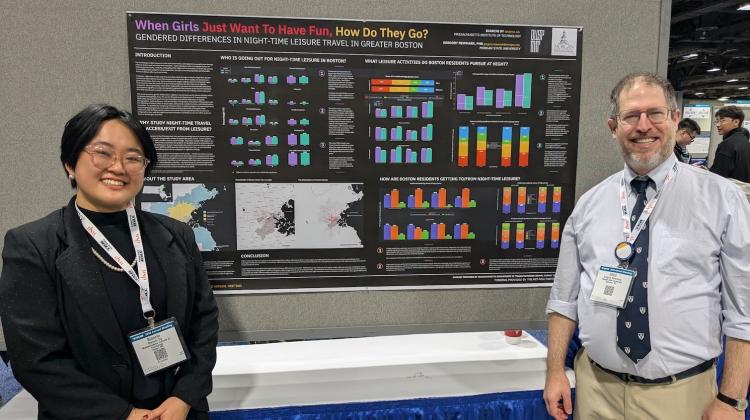When Girls Just Want to Have Fun, How Do They Go?

Often in the debate and literature about public transit, there is a focus on traditional working hours. With a work day focus, travel for wage labor, attending to essential activities such as medical appointments, and commuting to school tend to be the drivers of transit system use. This neglects other drivers of public transit use such as leisure activities or non-traditional working hours. Seeking to offer a more nuanced understanding of mobility in an urban area, a joint study by researchers at MIT and Morgan State University examines gender differences in nighttime transit travel use for leisure activities within the Boston Metropolitan Area.
The study leverages Massachusetts household travel survey data from 2010-11 to investigate differences in trip-taker demographics, their mobility mode preference, as well as the activity types and duration of those activities that drove their decision to take a trip outside of typical working hours. Their findings demonstrate a reliance upon single occupancy vehicles and a gendered difference in common recreational activities while suggesting opportunities for policy and transportation designs to increase equity, vibrancy, and economic outcomes through overnight transit service.
“With the increase in hybrid work arrangements, I think we’re going to see a rise in travel patterns focused on leisure and social visits. Aside from mobility of care trips, travel demand behavior literature and transit planning has rarely looked at how people move through cities for leisure and recreation purposes. These kinds of trips are critical yet under-investigated and improve productivity, creativity, and quality of life – in fact, I think they’re what make life worth living! I was inspired to study this topic by my own experiences and those of others using public transit to access leisure across multiple Southeast Asian cities, and wanted to know if there were similar patterns in a place like Boston, which is transit-rich compared to other US cities. At the same time, there is still high car ownership in the metropolitan area. If we really want to encourage people to reduce reliance on private vehicles and switch to transit, we need to think about how transit can support all sorts of trips at all times of day rather than just work – like visiting friends and family or reaching and leaving a restaurant, bar or theater at night, when safety is a more salient concern,” says Bianchi Dy, co-leader of the research team.
Dy is a Master in City Planning student at MIT whose work focuses on the integration and improvement of urban planning and design guidelines through data and computational methods. Gregory Newmark, also a co-leader of the research team, is an Associate Professor at Morgan State University. His research focuses on using data to create healthier, happier, and fairer communities particularly in relation to mobility behavior, public transportation, sustainability, and urban science.
A digital copy of the team’s 2025 Transportation Research Board Annual Meeting presentation poster, When Girls Just Want to Have Fun, How Do They Go?, can be viewed here.


